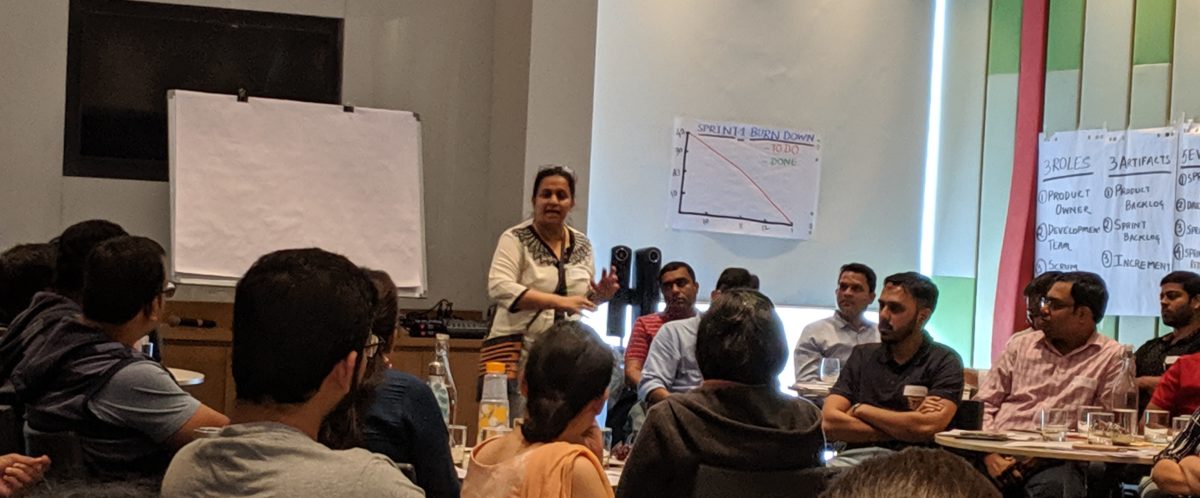Common Misconceptions and negative implications
Most teams implement Sprint Planning as three parts – Part 1, Part 2 and Part 3. The Product Owner comes in part 1 and 2, helps with setup of the Sprint Goal (WHY) selection of functionality (WHAT) and then the Developers sits and thinks over the technical (HOW) during the Part 2 of the sprint planning. The implication of this is that PO then does not get involved in the detailing and the road-blocks that team faces and technical feasibility problems that result during the Part 3 becomes a back-and-forth discussion between PO and Developers. This obviously results in a loss of productivity.
Recommendations
- The whole Sprint Planning process is an iterative, incremental and collaborative process and therefore there are three Topics and not three Parts to the meeting.
- First topic – WHY – is the business objective
- Second topic – WHAT – is the selection of the Product Backlog Items which may help achieve the goal. So, it is forecasting what items should be part of this Sprint.
- Third Topic – HOW – is the discussion of details and feasibility of the items and the help required from Scrum Master or Product Owner to get this done.
- So, you can consider the WHAT and HOW are iterative in nature where the HOW revolves around the WHAT and joint discussions are necessary. There are possible considerations that may happen to the WHAT because of the HOW. Technicalities do influence to a large extent on WHAT can be done and what cannot.
- The Sprint Planning Event can end with a decision on THE WHY – Sprint Goal, a forecast of WHAT needs to be done and the HOW for at-least a few things to be done over the next few days. However, the Sprint Planning PROCESS does not end with Sprint Planning EVENT. The Product Owner and Developers keep doing the discussion on the two topics – WHAT and HOW throughout the Sprint. Many-a-times, the teams do these detailed discussions on the HOW for the WHATs after daily scrums on the plan for next 24-48 hours.
So, my recommendation is not to call the Sprint Planning as Part1, Part2 and Part3 but iterative, incremental and collaborative process of Topic1, Topic2 and Topic3 which starts with Sprint Planning and continues throughout the Sprint.
This article is re-published on WORLD OF AGILE website –https://worldofagile.com/blog/myth-about-sprint-planning-consisting-of-three-parts-part1-part2-part3-vs-topic1-topic2-topic3/
